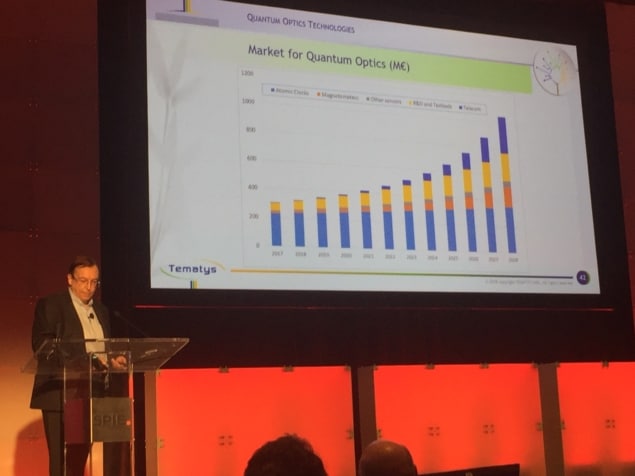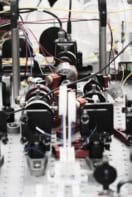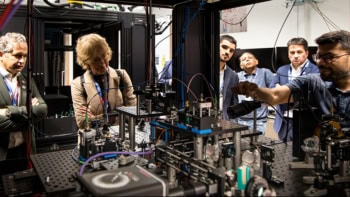
Thierry Robin of French technology strategy company Tematys offered delegates a sneak preview of a report due out at the end of March on the market potential for quantum technologies. While some devices are ready for commercialization now – notably temporal quantum sensors for smaller and better atomic clocks, which are needed in applications such as network synchronization – Robin predicts that wider adoption of quantum technologies will really take off from about 2022. From an estimated market value of just under of €400m in 2020, Tematys’s analysis suggests that the quantum industry will be worth more than €1bn by 2028.
The market evaluation covers quantum sensing and quantum communications – but not quantum computing, which Robin believes will have a much longer trajectory. Driving the growth over the next decade will be quantum sensors for precision measurements of electric and magnetic fields, as well as pressure, temperature, and rotation and acceleration, along with secure data transmission using quantum key distribution (QKD).
In his talk Robin highlighted a number of different implementations of quantum sensors, including the use of atomic gases for sensitive magnetometers that don’t need cryogenic temperatures – such as those being developed by start-up companies Twinleaf and QuSpin – along with devices that use trapped ions, solid-state spins, and superconducting circuits. One example he singled out was recent experiments using nitrogen-vacancy centres in diamonds, which achieved a 100-fold increase in the spectral resolution of nuclear magnetic resonance (NMR) spectroscopy – enough to allow researchers for the first time to perform NMR chemical analysis at the scale of single biological cells.
In the realm of quantum communications, Robin believes that QKD will become a compelling technology for secure data transfer in the next five to ten years. At the moment, he says, QKD systems are limited by data rate and the distance over which information can be sent. What’s more, these quantum systems are too expensive when compared with conventional cryptographic techniques, both in terms of the initial capital outlay and ongoing operational costs.
The good news, says Robin, is that innovations in photonic chip integration should lead to significant price reductions and improved performance, while adding QKD to existing communications systems would reduce running costs. And he believes that some customers, including financial institutions, would pay a price premium of 25–50% for the enhanced security offered by QKD systems. That would need the unit price to be cut from about $50,000–$100,000 today to less than $10,000, and if that can be achieved he expects that sales could reach a few tens of thousands of units per year.
Talking to Robin after his presentation, it seems that the impetus for the market survey came from a pan-European research network on nanoscale quantum optics that was funded through the COST (European Cooperation on Science and Technology) programme. “We started the COST Action back in 2014, and it will be coming to end in April 2019,” Mario Agio of the University of Siegen, Germany, told me at the end of Robin’s talk. “We wanted to find out how research in nanoscale quantum optics might be used in commercial applications, so we reached out to Tematys for their help.”



